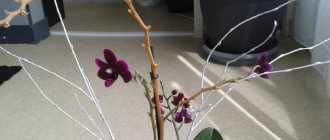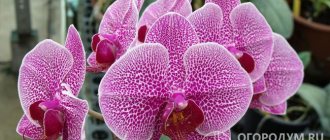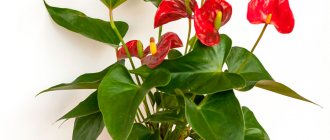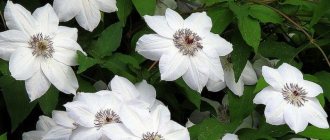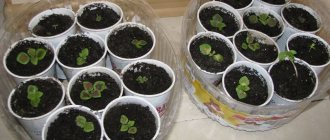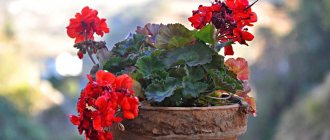It seems to many that all the beautiful flowers in the garden require especially careful care and special cultivation techniques. To have a luxurious flower garden in your garden, and at the same time not to spend a lot of time and effort on painstaking care - is this realistic? Yes, this is possible, but only if you plant certain flowers that do not need special conditions and care. Let's look at what beautiful and undemanding flowers can be sown as seedlings this season. In this article you will find a catalog of unpretentious annual, biennial and perennial flowers with names, descriptions of the sowing process and photographs.
Which flowers to choose for growing at home
When choosing flower seeds, you should consider several very important conditions:
- first of all, flowers, of course, should be attractive to you;
- second condition: the shape and color of the flowers should be in harmony with your home interior. Harmony always has a beneficial effect on the emotional background in the house;
- third condition: be sure to take into account the degree of illumination of the place in which the flowers will be located. It is not always possible to provide them with what they need. Therefore, when you choose seeds, carefully read the plant's light requirements.
When purchasing, pay attention to the availability of GOSTs, expiration date and manufacturer - it must be reliable.
Preparing soil and containers for flowers
Before sowing seeds, prepare the container and soil. Clay pots perfectly allow air to pass through to the roots, but pathogenic microflora easily accumulate in them. Therefore, plastic containers are an ideal option for flowers. Rinse the containers thoroughly with hot water and baking soda and rinse with cold running water. Read on the seed packet for soil requirements. Different plants may have different requirements. But most often, ready-made soil or a mixture of sand and peat serves as excellent soil.
Raising virgin soil
Summer gardens are especially useful when you are going to start a flower garden in a new area with uncultivated soil. Many novice flower growers have the opinion that it is better to start with perennial plants: they say, once you plant them, no worries. But what is really happening? After all, even if you don’t get involved with capricious crops, of which there are quite a few among perennials, but plant the most undemanding species and varieties, but in a poorly prepared place, then:
Article on the topic
Cleome: time to sow annuals
– in flower beds of perennial plants, you do not have the opportunity to dig the soil deeply with the addition of organic fertilizers and thereby improve it;
– weeds, the seeds and pieces of rhizomes of which are difficult to get rid of in one digging of the soil, are intertwined with roots with cultivated plants, and removing them can be very difficult;
– in new areas it is difficult to immediately plan flower beds, and moving perennial bushes from place to place is often not very easy.
The second piece of advice naturally follows from this: start “developing virgin soil” by planting annual flowers. Indeed, as a result of autumn or spring digging of flower beds with the addition of organic matter, you can significantly increase the fertility and structure of the soil and clear the area of most weeds.
Convinced? Are you already going to the store to buy seeds? And for which ones?
Calendula medicinal series 'Pacific'. Photo: AiF/ Elena Kolesnikova
We germinate the seeds
To increase germination and strengthen the future plant before sowing, treat the seeds as follows: wrap them in gauze and dip them in water with an added growth stimulant. The soaking period depends on the size of the seeds - from 1 to 3 days.
Situations often arise that after planting the seeds in the ground, all the deadlines have passed, but the seedlings do not appear. To avoid this, when preparing seeds for sowing, stratify them. Simply put, put them in the refrigerator at a temperature below 5 degrees and keep them there for several days.
If the seeds have a thick seed coat, it may prevent them from germinating. In this case, soak them in water and carefully peel off the thick skin.
Balsam
Balsam seeds can be purchased at a specialty store. Their sowing is carried out in spring. To begin with, they are kept for a quarter of an hour in a pale pink solution of potassium manganese, and then washed in clean and warm water. For sowing, you can take any ready-made soil mixture that is suitable for growing flowering indoor crops, or you can take sand mixed with peat. Fill the box with substrate, moisten it and sow the seeds, but you don’t need to deepen them too much. The crops are covered with glass on top and placed in a cool place (18 to 20 degrees).
The first seedlings should appear in about half a month. They are picked into separate pots only after they have formed a pair of true leaf blades.
Sow seeds and care for crops
If the seeds are small, then they are not deepened into the soil, but only laid out on its surface. Spread them evenly and spray them with a well-dispersing spray bottle, cover with film or glass. Medium-sized planting material is planted to a depth of 1-2 mm, large - to a depth of 1-2 cm. If you follow the folk wisdom accumulated over centuries, then the depth should be equal to the diameter of the seed material.
If you soak the soil well with water before and after planting and cover it thoroughly after sowing, then watering before emergence will not be necessary. But, if the soil still becomes dry, then spray it carefully. Do not allow large amounts of condensation to accumulate on the film. Many large drops are a sign of overheating. Remove excess moisture in a timely manner and lightly ventilate the crops.
List of interesting annual flowers for planting as seedlings
Why is it worth planting annual flowers on your site? There are a number of good reasons:
- They are very easy and simple to grow through seedlings (they sprout easily and do not need stratification).
- Annuals are very decorative: they are great for colorful flower beds, mixborders, borders, hanging flower pots, for container flower beds, for decorating balconies, loggias, terraces, and for vertical gardening.
- Unlike perennials, you will see their flowering in the same year.
- Many of them have a pleasant aroma.
- In stores you can find a very large assortment of seeds of various annual crops, which differ in appearance, shape, color, and flowering time.
The only disadvantage of growing them is that they bloom for only one summer, and then you need to go through the process of sowing, picking, and planting in a permanent place again.
So, what annual flowers can be sown as seedlings this season?
Ageratum
Terry, pretty flowers of ageratum can delight you for a long time, thanks to their long flowering. This is evidenced by the Greek name, which is translated as “ageless.” Ageratum is approximately planted from the second half of March to mid-April.
It should be planted in a common wide and shallow bowl, the approximate height is 7-10 cm. Take some seeds with your fingers and, as it were, sprinkle them on the surface of the soil, try to maintain a distance of about a centimeter between them. If you are interested in more sketchy plantings, you can use a toothpick or tweezers (the distance between them should be about 1 cm). Surface sowing cannot be covered with soil; it is enough to lightly press the seeds to the ground (with a finger or a spoon).
Sweet pea
Sweet peas help create a fragrant garden. The amazing palette of the smell of decorative peas reveals itself more strongly in the daytime. Delicate flowers are also interesting. In addition, it is climbing; you can install a small support for it (trellis, obelisk or something else). It is better to sow sweet peas in early April. It is recommended to choose an exclusively individual container for growing; plastic cups or pots, as well as peat pots, are suitable. Make a 2 cm hole in the center of the container, place the seed there and cover with soil.
Salvia
Salvia or ornamental sage is a wonderful annual for creating a colorful flower bed. Sown at home approximately in the last ten days of February, in March. You can find salvias of different colors: red, blue, pink, purple.
The scheme for sowing decorative sage is extremely simple: mix the seeds with river sand, scatter them evenly over the surface, and lightly press them into the soil.
Fragrant tobacco
Fragrant tobacco exudes a wonderful light, floral aroma in the evening and at night. Many gardeners plant it to “flavor the garden.” Besides the smell, it has an elegant beauty. Fragrant tobacco is sown at the end of February, in March. To grow ornamental tobacco seedlings, it is best to use a wide and shallow container, and then dive. The annual seeds are very small, so it is most convenient to first mix them with fine-grained sand and then sow them. After the procedure (and subsequently), it is recommended to water through a tray so that they do not become buried due to the pressure of the spray gun.
Celosia
Celosia is one of the most interesting flowers you can grow in your garden. Exotic, velvety, colorful inflorescences cannot but cause delight. Celosia prefers slightly acidic soil (pH 5.5-6.2), so choose an appropriate soil mixture. You can plant at home in early April. Try to maintain a gap between the seeds - about 3 cm. There is no need to cover it with earth or sand later.
Dahlia annual
Dahlias have a vibrant and lush beauty. It should be planted in early April. You can sow in a common container or in individual small cups. Dahlia seeds are very large, so you can place them on the surface of the soil using your fingers. The gap between them is 3 cm. Be sure to cover the top with earth, the layer thickness is 5 mm. Through seeds, dahlias are grown as an annual. However, you can dig up the tubers in the fall and plant them as a perennial in subsequent years.
Purslane
Decorative purslane is a ground cover plant for bright accents on the site. In addition to its bright beauty, I would like to note the important features of the flower: it is unpretentious, does not require special care, and is drought-resistant. You can sow it at home in the second half of March, in the first half of April. The flower crop prefers sandy soil, so be sure to add a large amount of calcined river sand to the substrate. They must be planted superficially, preferably in a common bowl, after mixing small seeds with sand.
Nemesia
An extremely cute and cute flower can be planted as seedlings in the last ten days of February, in the first half of spring. Nemesia planting material is quite small, so for planting it is convenient to mix it with sand, and then scatter this mixture evenly over the substrate.
Zinnia
Zinnia is a very resilient plant that does not require scrupulous care or special growing conditions. There is no need to rush into planting the crop; it is optimal to sow it in April. And although zinnia can be planted directly in open ground, when grown through seedlings, earlier flowering can be achieved. It is better to plant immediately in individual plastic cups, peat tablets or pots. Make a hole (3-5 mm) in the center of the cup, place one seed, and cover with soil mixture.
Marigold
Growing marigolds through seedlings is a very simple process; seedlings grow quickly and well. Approximate dates for the procedure: second half of March, April. Seedlings grow well both in a common box and in individual cups. When planting in a common bowl, it is convenient to make grooves (one cm deep, at a distance of two cm), and place seeds in the grooves at intervals of 2-3 cm. Cover the top with a mixture of sand, soil (in a ratio of 1:1) and with the addition of handfuls of wood ash.
Godetia
The beautiful godetia has a long flowering period. Planting can be done in the second half of March and the first half of April. It is necessary to use neutral or slightly acidic soil. It is convenient to sow in a common bowl and then dive. When planting, it is convenient to take the seeds with your hands and, as it were, add salt to the surface. Sprinkle earth on top, layer thickness - 3 mm.
Kobeya climbing
Climbing kobeya is an interesting and elegant climbing plant; it looks interesting when decorating balconies, in vertical gardening (can be planted next to a fence, gazebo, pergola, or special trellises). The flowers look like large bells. The time for the procedure is the end of winter, the beginning of spring. It is recommended to plant kobeya in individual containers: cups, pots. For each seed you need to make a hole about 1.5 cm in size.
Petunia
The beautiful petunia is a frequent visitor to summer cottages and private house plots; it is loved for its lush, bright flowers and delicate aroma. It is ideal for various occasions: for creating flower beds, mixborders, edgings, for vertical gardening, and decorating balconies.
Petunia is grown from seedlings at home, and then transplanted into the garden (rarely does anyone sow directly into open ground). As a rule, sowing dates fall in February and the first month of spring. The container can be different: peat tablets, plastic cassettes, wide and shallow bowls. It’s easier to sow immediately in a common bowl, because picking is inevitable anyway. The sowing scheme for petunia is simple: mix the seeds with sand and scatter them over the surface of the soil. Or you can spread the snow on the ground and scatter the seeds on top; when the snow melts, they themselves will be drawn to the required depth.
Nasturtium
Nasturtium is a climbing plant that needs support, for example, a trellis, a fence, an arch. As a rule, nasturtium is planted in April. Since it grows quickly, you can immediately plant the seed in individual cups or pots, and then plant it together with a lump of earth in a permanent place. Make a 2-centimeter hole in the center of the cup, place the seed in the hole and cover it with soil.
Venidium
Venidium looks like a large and lush chamomile. In terms of decorativeness, the annual flower is very interesting! But unfortunately, it is not very popular among gardeners. Sowing is done in April. It is convenient to sow in furrows (their depth is 5 mm, the distance between them is 4-5 cm). The gap between the seeds is 3-4 cm.
Scabious
The plant is perennial, but is often grown as an annual plant. Graceful scabiosa will decorate any flower beds and flower beds on your site. It is unpretentious and drought-resistant. The culture will appeal to lovers of delicate and graceful flowers. By the way, scabiosa has a long flowering period. It is usually planted in February and March.
Gatsania
Gazania (gazania) has a very impressive and exotic appearance, which will appeal to lovers of bright accents in the flower garden. The optimal planting time is the end of February, the beginning of spring. Keep the distance between the seeds - 2 centimeters from each other, then cover with sand (layer thickness - 5 millimeters).
Lobelia
Delicate but bright lobelia flowers look great both in a flower bed and in hanging pots. Excellent for vertical gardening and decorating balconies. Lobelia is sown for seedlings, as a rule, in the last ten days of February, in March. It is recommended to initially select a wide and shallow container due to the small size of the planting material. Also, due to the size of the seed, it is recommended to sow seeds mixed with sand. You can plant simply on the surface of the substrate, or you can plant in grooves (keep a distance between them - 3 centimeters, depth 2-3 millimeters).
Iberis
Iberis is often planted in the garden to frame flower beds, lawns, and to decorate rock gardens and rockeries. It is better to sow Iberis in the first month of spring. The culture does not tolerate transplantation well, so you should initially choose an individual container to avoid diving. Peat tablets or pots, plastic pots or cups will do. The seeds are covered with sand (layer thickness - a millimeter, no more).
Alyssum
Alyssum or lobularia is a spectacular and delicate ground cover plant that looks interesting in a flower garden in combination with many flower crops, and is also ideal for planting in a rock garden or on an alpine hill.
Lobularia can be planted in the last ten days of February, in the first half of March. Seedlings of this crop love slightly alkaline soil, so it is recommended to add a small amount of wood ash, chalk or dolomite flour to the soil mixture. It is optimal to make grooves 5 millimeters deep every 3-4 centimeters. Sow the seeds at a distance of 1.5 cm from each other, and then cover them with a layer of sand (0.5 cm).
Balsam
You can sow balsam for seedlings in the second half of March or early April. You can immediately plant them in individual cups, or you can plant them in a common bowl with subsequent picking.
It is very easy to plant large balsam seeds; just take them with your fingers and transfer them to the surface of the substrate with an interval of 3-5 centimeters. Important feature: sowing of balsam is superficial.
Snapdragon
An easy-to-grow and beautiful flower, snapdragon is a must-sow for all lovers of bright colors in the garden! The second name of the flower is antirhinnum. It is sown in February and March. Antirinnum prefers slightly alkaline soil, so it is recommended to add wood ash (2 tablespoons per liter of mixture) or dolomite flour (1 tablespoon per liter of mixture) to the soil mixture. It is optimal to choose a wide and shallow container for sowing snapdragons. It is convenient to sow in furrows; the gap between the grooves is 3 cm, their depth is 3 mm. The seeds must be sprinkled with a very small layer of sand (1 millimeter).
Verbena
The optimal time for planting verbena seedlings is March. It is recommended to add a small amount of wood ash to the substrate. To sow an annual plant, it is convenient to use tweezers or a wooden toothpick. You need to lay them out every 2-3 cm, cover the top with a layer of soil of about 3 millimeters.
Plant care
As soon as the shoots appear, remove the film or glass and open them slightly for several hours, gradually accustoming the flowers to the light and surrounding atmosphere. Some plants require picking to strengthen the root system. Their number is also different for different plants - 2-3 or 4-5. During picking, flowers are transplanted into an earthen mixture. It is more nutritious and favorable for full development. Read about the number of picks and the composition of the soil on the bag of seeds or in specialized literature.
Remember that for the first 2-3 days, pruned seedlings should not be exposed to direct sunlight and should be kept cool.
Our online store "Seeds by mail" offers you a wide selection of flower seeds that can satisfy the most varied tastes and the most varied requirements for growing conditions. We will not only send you seed material, but also provide detailed instructions on agricultural technology for any plant.
SOW DIRECTLY INTO THE GROUND
Most climbing plants (morning glory, ornamental beans, dolichos, ornamental pumpkins) have large seeds that are sown directly into the ground.
Lianas not only decorate the garden, but also allow you to decorate outbuildings. For those who like to grow two-in-one plants, beautiful and useful, we recommend sowing purple coneflower, sage, snakehead, lofant, monarda, hyssop, and St. John's wort. They have healing properties, and also have a beautiful appearance, worthy of the most exquisite flower garden.
And it is absolutely impossible to imagine an estate without our dear hollyhocks, Chernobrivtsev (Tagetes) and mattiola. Tagetes are the most popular flowers in Ukraine. They are unpretentious, tolerate transplantation at any age, grow in the sun and partial shade, and are content with scanty watering.
Today, a great variety of tagetes varieties have been created, in all sorts of colors - from white to dark burgundy.
One thing has remained unchanged: you probably won’t find a flower garden without these amazing hard-working flowers that bloom tirelessly until frost.
